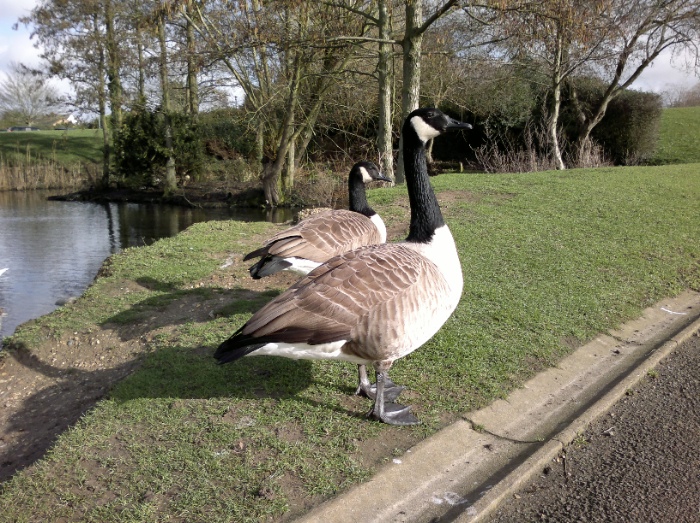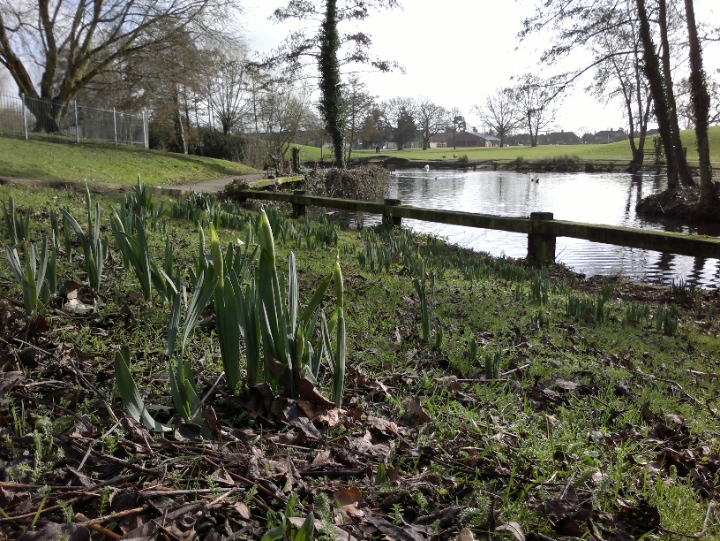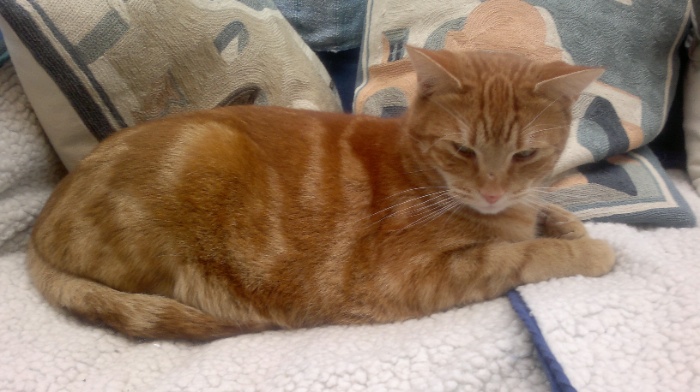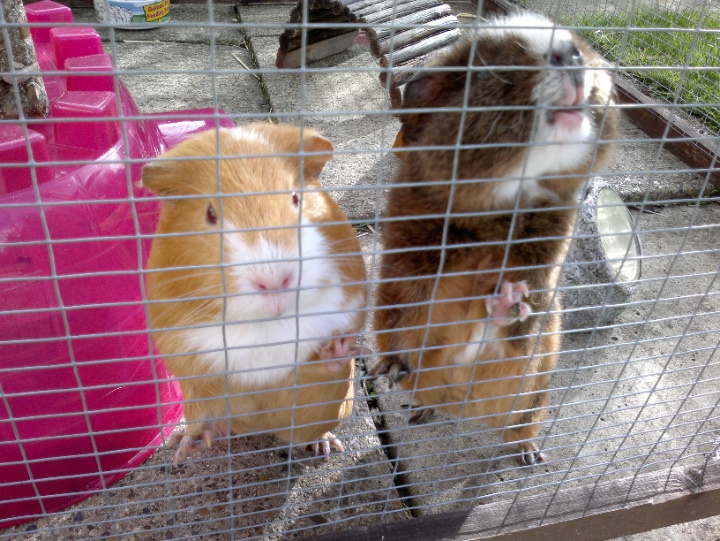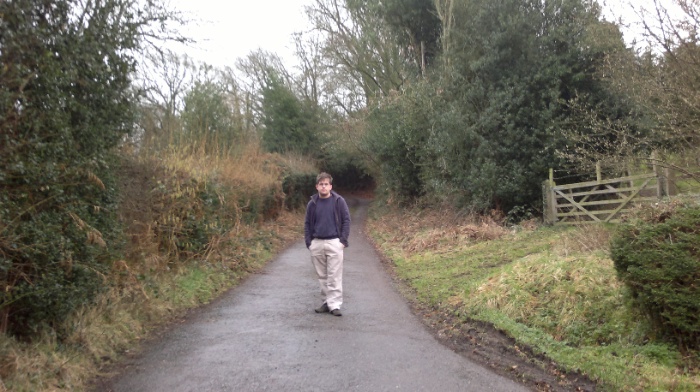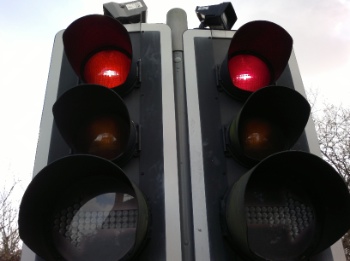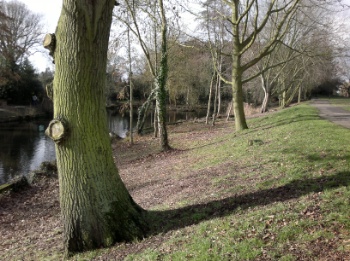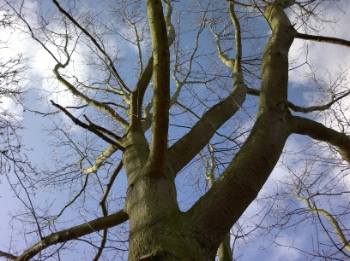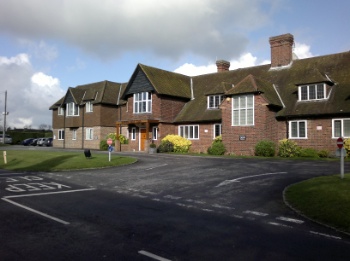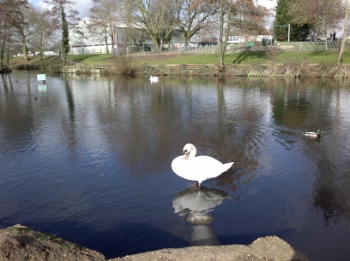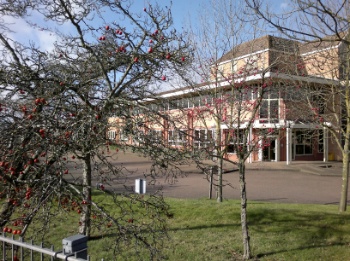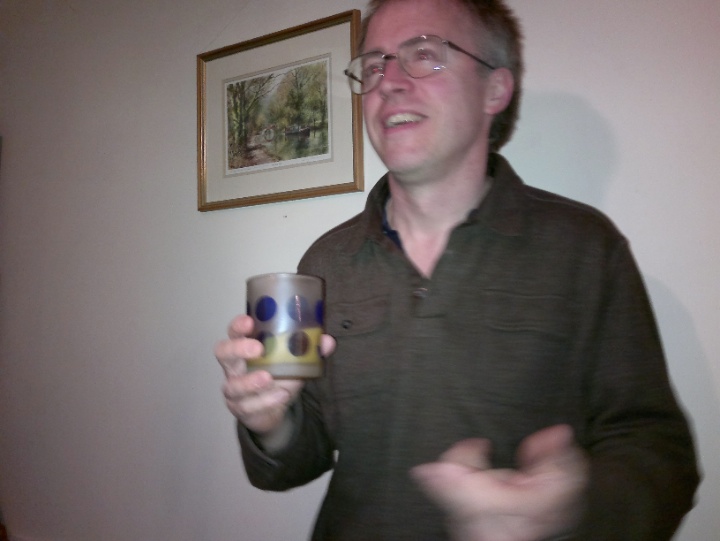Review: Nokia E7, part 2 - Camera and Camcorder functions
In part 1 of our Nokia E7 review, Rafe looked in detail at its hardware and gave first impressions of using the device. In this, part 2, I look at the E7's 8 megapixel EDoF camera in detail. How much do you lose in terms of quality, compared to the N8's stellar camera? What about low light photos? What about video capture? And reading QR codes? It's all tested below. In part 3, coming up in a few days, I'll be looking at multimedia, video playback, gaming and more...
But let's start at the beginning. Although the E7's innards largely resemble those of the flagship N8 (as do the cheaper C6-01 and C7-00), in terms of processor, RAM, graphics chip and supporting electronics (including USB-on-the-go and, in this case, HDMI out), there have been a number of compromises in terms of the converged peripherals built into the device. Rafe explained all this quite well in his E7 review part 1, but the main omissions for space reasons, all of which directly impact this 'Camera and multimedia' review part, are:
- no auto-focus camera - the E7 has a much smaller, simpler EDoF unit
- a large loudspeaker - the E7's speaker 'slot' is the same, but the actual component is smaller and sounds quieter and tinnier
- no FM transmitter - a shame, but Nokia probably ran out of room for the antenna
- no microSD card slot - the E7 just has the 16GB mass memory. Space reasons are quoted, though I'm not completely convinced by this, since Nokia found room for a SIM card slot/tray and since the bottom of the device is unused. (More comments on the implications of this omission below.)
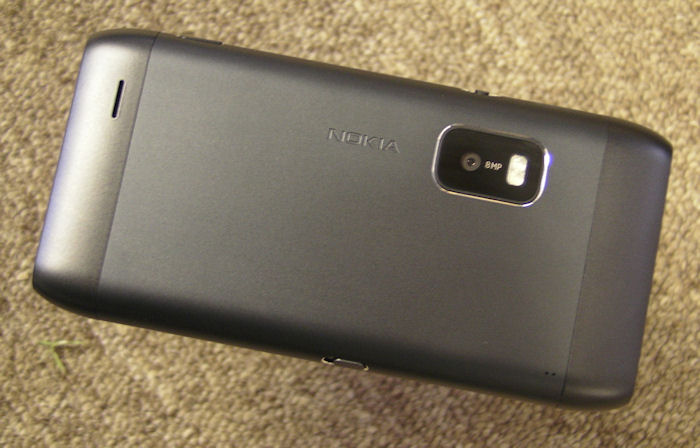
The use of an EDoF camera in the E7 has been one of the most controversial aspects of its design and, as Rafe said, is a direct consequence of the presence of the full width QWERTY keyboard, reducing the available depth for a camera unit to about 5mm (cf 10mm on the N8). Given the overall form factor and ruling out an unsightly camera 'hump', this limitation is understandable. What's less comprehensible is the use of EDoF rather than a similarly sized auto-focus unit - that in the E72 is only a millimetre or two bigger. Perhaps the tolerances were, quite literally, so tight that the lower profile EDoF camera (which dispenses with bulky moving lenses in favour of a fixed lens and optical/electronic trickery).
Regardless, the E7 has an EDoF camera and we're stuck with it. It's not all bad news - you'll remember my similar review part looking at the C7's camera, Nokia's latest (third generation) EDoF unit, this time at 8 megapixels. Nokia refer to these cameras as 'full focus', but essentially Extended Depth of Field means that optical and software tricks produce images in which everything from about 40cm to infinity are all in focus all the time, automatically. What interests me here is how this works in practice and what the tradeoffs are.
EDoF works by using an asymmetrical lens that has the capability to focus objects from different distances, depending on which parts of the lens the various light 'rays' strike, on the same sensor. Internally, this naturally results in an unholy blurred mess, but by using chromatic tricks (using the different optical characteristics of different colour frequencies - see my earlier article on EDoF), by knowing the exact optical properties of the asymmetries in the lens and by using a healthy dose of very clever enhancement electronics, the mess is largely (but not completely) cleared up to produce images that, to the naked eye are pretty clear, whatever the subject, in good light.
It's also worth noting that because EDoF cameras don't have any moving parts, the phones they're included in end up being surprisingly robust and hard to damage - at least in terms of harming the camera. In addition, because the EDoF processing all happens in the custom electronics inside the module, the same corrections also apply when the camera module is used in video mode, leading (as on the C7) to spectacular results, of which more later.
As on the C7-00, it's interesting that there's 'face detection', in that real time frames are thrown around faces in your photos, but this does seem to be a left over from the generic Symbian^3 Camera application (it's used a hundred times more usefully on the N8) and serves little or no purpose on the E7.
Here are a couple of example photos taken on the E7 camera, in full 8 megapixel (4:3) mode (the default is 6 megapixel (16:9), interestingly). As usual, click each image to enlarge or download:
As you can see, the E7's camera is able to take very pleasing photos in good light. For the C7, I said that:
EDoF means that non-technical people can pick up a phone and take pretty decent casual snaps without worrying about waiting for focussing or depth of field or even 'snatching' at the photo, since capture time is very fast indeed - in daylight it's almost impossible to blur an EDoF photo.
You can see all this in my photos above, showing foreground and background equally in focus and with the images generally pretty crisp. However, you'd expect an E7 owner to be reasonably technical, having deliberately headed for a QWERTY-driven 'Communicator' rather than a casual phone - which makes the absence of an auto-focus camera, for people who do know what they're doing, missed all the more.
The most obvious limit on EDoF technology is that anything closer than about half a metre (19") can't really be photographed with any clarity, as shown below. Again, click through if you really want the full 8mp image to inspect:
Reduced to fit on this web page, the image looks acceptable, but download the full 8 megapixel version and you can see that the cat's not quite in focus, which is annoying.
Apologies for staying with pets (hey, they make less fuss about being photographed than wife, kids or friends!), but here's another example:
Again, click to enlarge or download and you'll see the EDoF restriction - anything closer than about 30 to 40cm just isn't handled by the optics and you get a soft focus mess. This is all part and parcel of EDoF, and one of the known trade-offs for its advantages (the biggest being the small size of the camera unit needed, of course).
In theory, as mentioned above, EDoF also means that non-technical people can take decent photos. The system's still not foolproof though, as you can see from the next example shot, of Rafe, taken by a non-geek family member:
Look at the full 8mp version and you can see quite a bit of blurring - it's certainly nowhere near as crisp as it should be. EDoF's not to blame here. There are two possibilities: firstly, the blurring could be because the person taking the shot did the usual amateur mistake of pressing the whole phone down rather than just the shutter button - I've seen so many members of my own extended family do this and it always ruins the shot. Secondly, the E7's camera 'glass' is fully exposed to dirt and fingerprints and I suspect that the latter might be to blame here. Giving you a flawed photo example illustrates two more of the possible pitfalls in mobile phone photography!
Happily, many of your E7-shot photos will come out quite a bit better, especially if the light's good enough. Here are a few examples, with annotations where appropriate. As usual, click through to download or enlarge:
The last two examples above are worthy of note. Firstly, the white swan has almost no detail - the relatively cheap (compared to the N8/N86/N97 etc) optics and sensor simply can't cope with the wide variations in contrast and the swan becomes a white blob.
Secondly, you may have seen in my review of the Nokia C7 that I snapped a hedge of berries of the same colour - but the photo showed huge colour variation, erroneously. Exactly the same issue is shown here and red berries are again to blame. To be fair, the only colour problems with these EDoF cameras have been in getting the colour of red dots right, so the optics are undoubtledly good enough for most people.
Now, listen up. You'll recall EDoF's inability to shoot anything closer than about 40cm crisply? This limitation is a far more serious one for the potential E7 owner than it is for (say) someone with the C7 or C6-01, whose main 'macro' subjects might be cats, flowers and bowls of fruit(!). A mobile professional is going to want to use the E7 camera as a scanning/recording device, to snap white boards, back-of-envelope sketches, logos, documents and business cards, in some cases with recognition software to process what's been captured.
I tested document capture on the E7 in a separate piece here, concluding that if you just want to snap a magazine cover or flyer in order to remember a particular detail (say, a phone number or web site URL) then the E7's camera should be OK at a pinch. The image will be a little blurred but probably sufficient. The same will apply to a white board with a plan or brain dump that you want to record for later transcription.
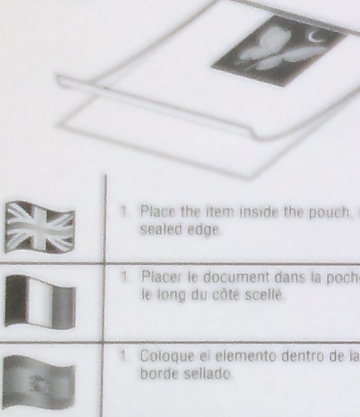
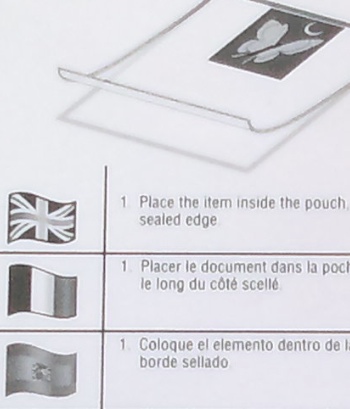
Zoomed in snaps of an A4 document, photographed on the E7 at 12" and 15" (roughly 30cm and 40cm)
However, if you're trying to do what many people have been doing with Nokia auto-focus cameras for the last few years - use the phone camera as a makeshift photocopier - then you're out of luck, the EDoF and optics aren't up to the job. It's telling that no OCR (Optical Character Recognition) software of any kind is shipped with the E7, so clearly Nokia's engineers came to roughly the same conclusions as me.
In the Ovi Store, you can get QR code readers, mind you, software designed to read those 2D bar codes you sometimes see on products or artefacts. I downloaded BeeTagg QR Reader and it worked flawlessly on the E7, somewhat to my surprise.
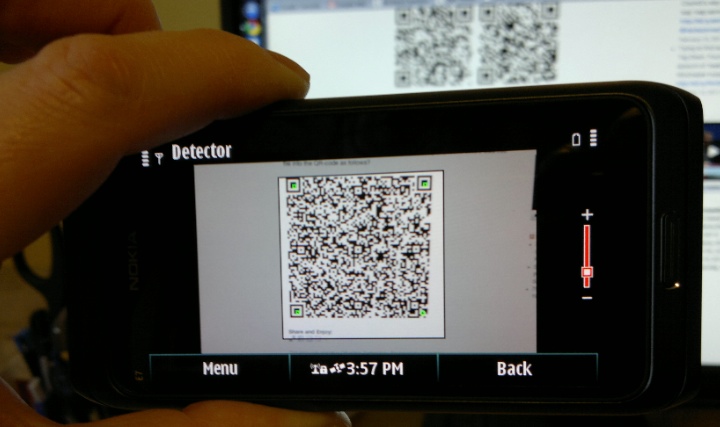
The lack of precise focus didn't seem to bother the QR software too much and in each case it was able to decode the matrix and provide web URL and other details, as needed.
In short, you want a thin QWERTY smartphone? You'll be OK for general daytime photos and handling QR codes but don't bother taking evening snaps and you'll have to let accurate document scanning go.
As with the C7 before it, although there's dual LED flash (cf the N8's Xenon), the camera descends into 'grainy, blurry phone photo' territory when the sun sets, not surprisingly. The EDoF still works but there's obviously less reliable pixel information to process so don't expect wonders. Most of all though, low light performance is limited by the small size of the lens and sensor - it's not much worse than photos taken on the likes of the X6 or N97 in low light, but by recent standards (Nokia N8, Sony Ericsson Satio, HTC Mozart and others, all with Xenon flash), you won't impress anyone with your indoor or evening snaps.
Here's a typical (controlled) low light example, taken with flash (i.e. everything automatic):
So you'll get a memory of the event, but not a very good one. Anything that's moving, even slightly, will be blurred and probably unusable once you look at it on a desktop monitor.
Here's the same scene taken without LED flash, to look at the raw noise in low light conditions, again feel free to click through:
Results are even worse, naturally, with photo noise and extreme blurring. Again, don't think I'm beating just up the E7 here - this is a rant against every other smartphone out there that is shipped with a cheap camera and LED flash. Manufacturers might just as well not bother, for low light shots anyway.
Similar to my observations on the C7, don't go thinking "I really wanted the N8 for its good camera, but I love the E7's screen and QWERTY keyboard - I know, I'll get the E7 as it's still 8 megapixels, after all". Because you probably won't be happy. If you need a decent camera in your phone (for whatever reason) then get the N8.
I'm being a bit melodramatic, it's true. The E7's camera will be fine for casual snaps of family and friends, out and about. In fact, it's ideal, since the EDoF shutter speed and simplicity mean that you'll grab the moment better than on an auto-focus camera phone. And in good light conditions many photos can come out gloriously well, full 8 megapixel glory. But you can forget about anything arty or close-up or shot after sundown.
_________________
One final note of concern has to be voiced before I move on from still photography. Unlike on many other smartphones, the camera 'glass' on the E7 (it's actually optical-grade plastic with a scratch resistant coating, as on the C7 and N8) isn't recessed at all, not even by the usual technique of providing a raised perimeter, to keep the camera from rubbing against desks, fingers, etc. The unit is 100% flush with the phone's back.
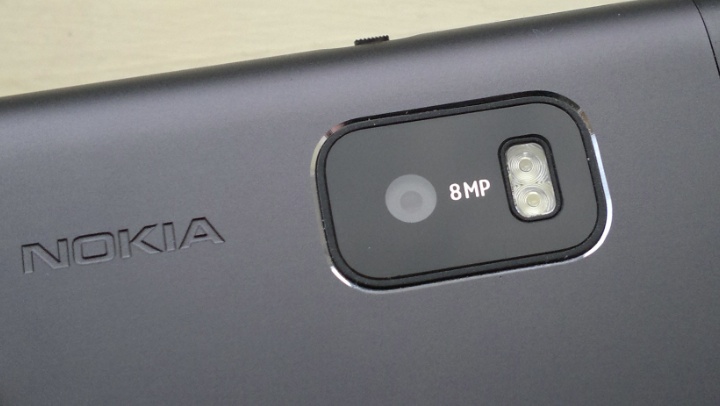
Given that the E7 is designed without feet, so that its bottom sits directly on the desk while you're hammering away on the QWERTY keyboard or sliding the open phone around your desk while you shuffle other junk, this means that, despite the coating, I fear that the camera 'glass' is going to get damaged during the lifetime of the device. You'll remember from my old Camera Nitty Gritty series that scratches on the camera glass aren't necessarily the end of the world, but they do have an effect, especially if there are strong light sources in front of you.
Of course, given that photography is very much a secondary feature on the E7, it's not a total showstopper (as it would have been on the N8, for example), but it's an annoying characteristic nevertheless - I would have liked to have seen the camera surface sunken half a millimetre underneath the flat bottom of the device. I guess it all comes down to tolerances again...
Video camera
As mentioned above, the EDoF optics and chip work in just the same way in video mode, which is actually something of a revelation, since it dramatically solves the perennial focussing problem for video capture, which normally sees manufacturers veering between fixed focus, initial focus, continuous auto-focus, touch-to-focus, or even no focus at all, all of which have distinct pros and cons in terms of performance and usability.
As on the C7, the E7's EDoF video camera results in crystal clear video from about 40cm right to infinity, clearer to the naked eye than that on the N8, though the latter's Carl Zeiss lens and larger sensor will help more as the light levels go down. The use of dual LED as a video light does in theory give the E7 an extra string up its bow at night time, though in practice most evening subjects hate being blinded by such a single point light source, so you can only really use it for inanimate subjects.
As on the C7 and N8, the frame rate is 25 fps and clips are encoded at over 10Mbps in H.264, ensuring maximum picture quality - even when panning around, the amount of blurring and artefacts are surprisingly low. Here's a test clip taken on the E7:
(Click on the '360' or '480' label and up the resolution to 720p, then maximise to full-screen for the full video. And note that this is with YouTube's extra layer of compression and with artefacts introduced in iMovie when I edited this together)
Sound quality is mono but with the same stellar quality as on the N8 (so the E7 probably also has a MEMS microphone chip).
Overall, video on the E7 is very impressive and very easy to shoot, with not focussing hassles or limitations or 'hunting'. As long as the subject you're shooting is over about 40cm away, everything will be in focus all the time. In fact, video capture with EDoF and the MEMS mike will trump footage from every other video-capturing smartphone (including the N8!) for 90% of users.
One side benefit of having dual LED on-board (rather than the N8's Xenon flash) is that the E7 (and C7 before it) has a handy built-in torch function. From the homescreen, pull down the keylock slide for 2 to 3 seconds and the dual LEDs light up - this is an operation that can be done without looking from within your pocket on a dark and cold night and certainly adds another string to the E7's bow.
Interface
As with all the Symbian^3 phones, the E7 has the same old clunky S60 5th Edition camera application with, seemingly, almost nothing changed - right down to the use of having to double-tap to action dialog items - something which has been banished from the general Symbian^3 interface. Hopefully this can be addressed in the upcoming wave of device updates?
________
In the next review part for the Nokia E7, I'll be looking at the supporting photo and video applications, along with the suitability of the E7 for general multimedia use (summary: it's a real pleasure, with that angled-up CBD display - but oh Nokia, I really missed microSD and a decent speaker....)
Steve Litchfield, AAS, 15 Feb 2011
Reviewed by Steve Litchfield at

